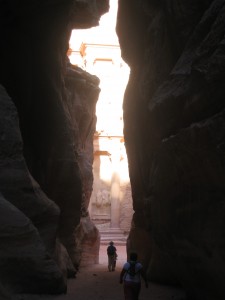Who, What, When, Where, and Why: WHERE
(The seventh post in a series that summarizes an entire semester of Journalism 101.)
Location, location, location. It’s a priority when buying and selling real estate, and it’s a priority when deciding where to set your manuscript.
Location is affected by the element of time. Speakers’ Corner in London looks different now than it did one hundred and fifty years ago. And as I’ve written before, there’s an authenticity to knowing a spot personally—seeing it, smelling it, listening to it—before writing about it. (Google Earth just doesn’t engage all the senses…yet.)
Setting as Environment. Time, place, and circumstance are the classic elements of a setting. They form a kind of holy trinity, separate but equal (you’re lucky I’m not using theological terms—oh, what the heck—consubstantialis). Together, they impact each other and color your readers’ vision of their journey through your novel. Choose location carefully because a reader reads through the prism of location.

Setting as Character. The more I write, the more I realize my settings deserve as much nuance as my characters. A setting is the envelope in which you put your letter (novel). You can have several settings. Settings have scents, like your heroine’s perfume. Sound, like a child’s voice. Show age, like a grandfather character. Treat the setting as carefully as your characters, and you’ll develop believable “time and place” that enhances your story, or even moves it along.
Setting as Metaphor. Sometimes the worst things happen in beautiful places—a shark attack on a beach, or an avalanche in a mountain resort. Contrasting setting with story can enrich both. The added benefit can be a straight shot into redemptive values beloved by readers.

Setting as Active Element. Weather is a great example of setting as an active element. I’ve touched on it in previous posts, and repeat that the natural world is full of setting markers that require few words to convey a lot of information. Saloon or Starbucks? The first telegraphs the Wild West, whereas the second is contemporary and, probably, urban. Tenement or Park Avenue penthouse? The first implies poverty and distress, whereas the second triggers thoughts of wealth and privilege. There are also inventive ways to provide contrast while using setting as an active element. For instance, what if you place someone who has just lost a family fortune in the penthouse? Pull in the distress and desperation your reader would expect in the tenement housing? Or strand an urban dweller in a tiny, Western saloon during the worst sandstorm of the century? Now that setting could create an apocalyptic masterpiece!
How do you use setting in your work? I hope you don’t ignore it, or breeze past it without the thought and strategy it deserves. [subscribe2]